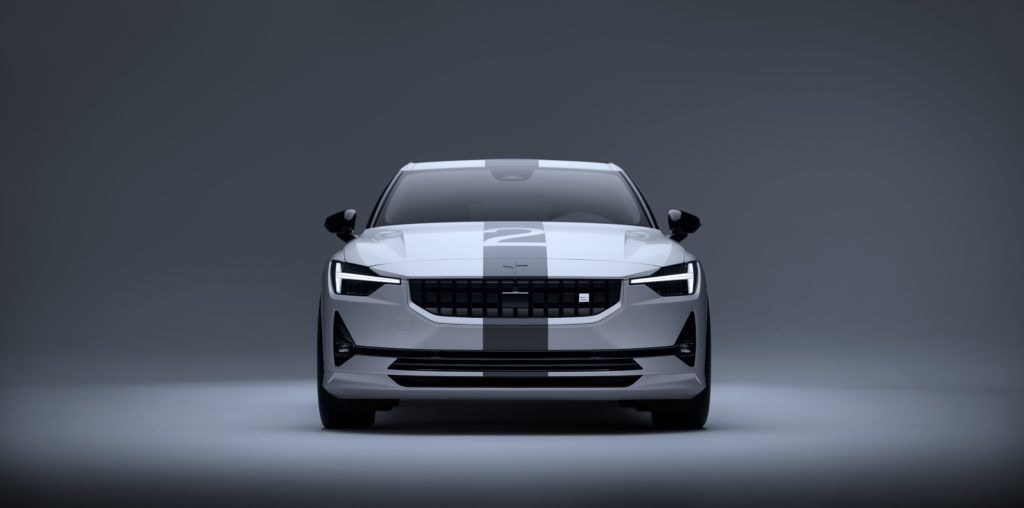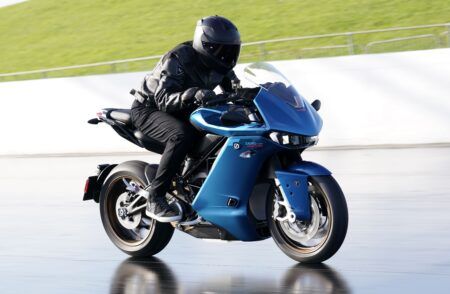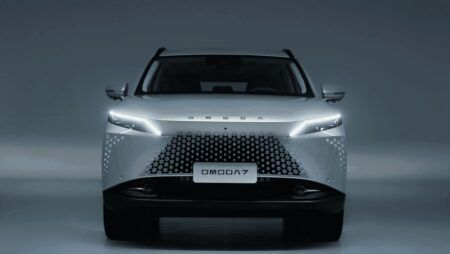Words Kyle Fortune
With a limited to an edition only 270, the Polestar 2 BST Edition 270 is an enthusiast-orientated car in the BEV marketplace that underlines company’s desire to create cars that people like to drive, to the point that they can adjust them to suit their individual needs.
“As an engineer this is a dream,” says Joakim Rydholm, Chief Chassis Engineer, Polestar. We’re at Race Resort Ascari in Spain, a location more usually as the chosen launch venue for sports and supercars opposed to EV saloons. But the Polestar 2 BST Edition 270 isn’t a conventional EV saloon, or at least it’s not when applying the more usual EV paradigm. A few EV hypercars aside, the BEV marketplace is one that’s arguably anchored to pragmatism, with considerations of range and ease of use taking precedent over enthusiasm for performance, or more correctly, here, poise.
Rydholm thinks differently, he’s clearly hugely passionate about driving, and he drives a rally car in his spare time. But he says even if you’re not someone who’s enthusiastic about driving, you’ll almost certainly know what you like. He explains: “My wife uses the car just for transportation, but she has a very clear idea of which car she likes to drive, and which she doesn’t. That’s the thing with people. Even when they drive just from A to B, they will still know if they like what they’re driving or not.” He continues: “With an EV you can only do so much with a powertrain. Chasing crazy 0-100km/h times isn’t what driving is about,” so instead his focus being on creating a driving experience based around feel and engagement. That’s key, and it explains the Polestar Model 2 BST Edition 270, and the company’s wider view on making EVs that are enjoyable and engaging to drive.
Limited edition
The Polestar 2 BST Edition 270 is a somewhat extreme representation of that, the model being built in, as its name highlights, a run of just 270 examples. The BST element refers to a Polestar 2 Experimental car that preceded this production car, the ‘Beast’ which Rydholm built with Polestar CEO Thomas Ingenlath’s blessing. That experimental car debuted at the 2021 Goodwood Festival of Speed, where Rydholm demonstrated an impressive poker face by saying it wasn’t something that was being considered for production.
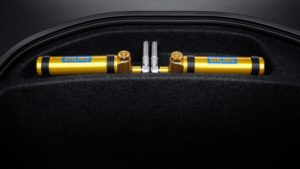
Evidently it was, limited production, admittedly, which isn’t that surprising given its somewhat unusual specification. Building on the already driver-orientated Performance Pack which includes Öhlins dampers that’s available with the Polestar 2, the BST Edition 270 gains an even more specific set of Öhlins adjustable dampers, as well as Brembo brakes, a 25mm suspension drop, front strut brace and larger 21-inch wheels from the Polestar 1 – shod with tyres that have been tuned specifically by Pirelli for this model. Rydholm admits during the car’s development he took CEO Ingenlath out to demonstrate the advantage of the strut brace on a test track, the boss giving his blessing after the demonstration.
The changes, and development is extensive given the limited series status, those dampers being very special. Indeed, Henrik Schiölde, Design Engineer and Test Driver, Öhlins, saying: “the front dampers are unique because it’s the only application where we have a combination of both a compression valve and what we call a dual-flow valve.” Öhlins doesn’t offer this for any other OEM project, or, indeed, any of its aftermarket applications.
The bespoke dampers offer a number of advantages in relation to ride and handling, but not also the ability to adjust them, with 22 different choices on both the compression and rebound possible on the front dampers, with the rear offering a combined 22 choices across both compression and rebound. If you think that sounds confusing, and if you’re not a chassis engineer that’s entirely possible, Rydholm says: “when you buy the car you get a link to a movie explaining how to adjust it, it’s very easy, my mother could do it.”
There’s a suggested baseline setting of 7, 7, 7 for the dampers which Rydholm says is a good compromise, it being 7 for compression, 7 for rebound on the front, with a combined 7 setting for both compression and rebound on the rear axle. Doing so isn’t the work of a moment, the fronts being relatively straightforward with the adjustment able to be done under the bonnet and by putting the wheels on full steering lock for access to the bottom of the damper, the rear dampers requiring a jack to lift the rear off the ground to enable access to the single (each side) click selector.
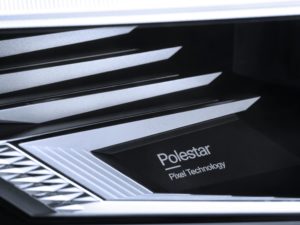
Dynamic difference
Naturally, and with a track and team of Polestar techs with a jack at our disposal, Rydholm’s keen to show how changing the damper settings alters the dynamics of the car. We set off around the circuit using the same baseline setting that provided taut control combined with decent comfort on the road, it quickly revealing itself to be a touch soft on track. I’m keen to have a sharper turn in, combined with a more mobile rear and Rydholm suggests a setting of 3, 3, 5, which, on the first long sweeping left-hand turn on exiting the pits does changes the car’s dynamism to suit my preferences.
What’s interesting is just how different the requests are among the small group of journalists in attendance, Rydholm being genuinely surprised by this. “I had a clear feeling about what you would say, then after listening, that’s changed my mind, you wanted more control, but others wanted it softer for more time to react,” highlights the chassis engineer. Our subsequent sessions around the track sees me further tweak my settings to get the Polestar 2 BST Edition 270 to suit my particular requirements, which, for me is a 2,2,1 setting.
Only 270 customers will get to do the same explore the range of possible changes themselves, and the likelihood is that most will stick with the default setting, but, regardless, the existence of the BST Edition 270 does underline an unusual commitment to providing an enthusiast-orientated car in the BEV marketplace and reveals something about the company’s philosophy. With the company having recently announced the Polestar 2 model is switching its single motor versions from front- to rear-wheel drive, Polestar’s unusual focus on dynamics in the BEV sphere is undoubtedly interesting, and if Rydholm’s assertions are right, their work here should create cars that people like to drive, even if they uncertain as to why that might be. In the brave new EV world that’s an interesting take on the norm, and one, which, after sampling for ourselves, is to be celebrated.


